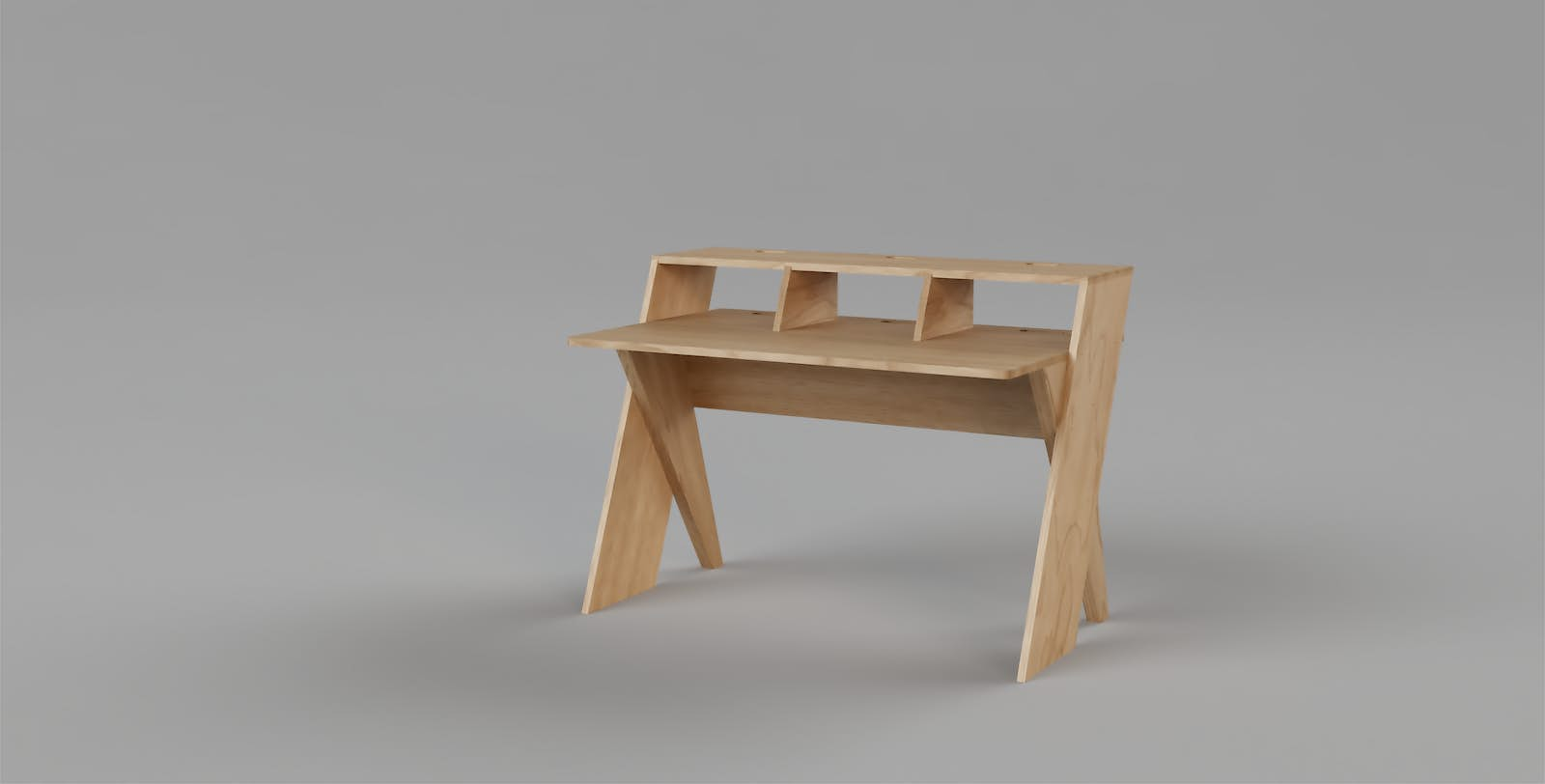Dorm Desk


A desk from a single sheet of plywood. Designed as a flatpack so it can be assembled in place
84
Furniture
Files Included (2)
dorm desk.f3d
589 kBDorm Desk.svg
37 kB
Materials
48x96" sheet of plywood
Screws or fastening methods of your choice for assembly
Wood glue
Edge banding (if desired)
Your choice of finish
Tools
Shaper Origin
1/4 bit
1/8 bit
Instructions
Prep work (Fusion3D): a. I'm including the fusion file in case you want to change dimensions and sizes. b. If you want to use bolts to hold the leg together, you'll also want to edit the fusion file and enlarge the 1/8" pilot holes to the size of your bolts. c. The leg chamfers on the bottom portion of the legs was edited directly on the svg so it's not going to be in the fusion file.. d. I plan to put rabbets and dados on the top piece. Something faster for me to do on-tool than on design. Prep work (SVG): If using the svg file directly a. you may want to split the file and the plywood it into two or more pieces for easier handling. b. Be aware that the pilot holes for the screws are done using 1/8" bit and won't penetrate all the way to the other side of a 3/4" plywood. Warning: I'm no fusion expert and this is really the first complete project I've done. The file still has some blue lines and some magenta circles on it, heck if I know how to fix those so use at your own risk. I've only dry-fitted mine (photo 4). It seems stable enough once the table top and back support are secured. Cutting and Assembly 1. Tape and layout as usual. 2. Cut. 3. The bean-shaped cutouts and matching shape are used to align the legs so they're at the correct position. Either the cutout or the matching shape should be offset by -0.01" so they fit without sanding. The shape should be pocketed at slightly over half the thickness of your plywood. I'd put a picture but shaperhub only allows four photos. 4. The inner legs should be doubled up. Glue them together using wood glue. Be sure the bean shaped pocket is facing out. 5. Glue the bean-shaped alignment key to either the outer leg or the inner leg (I did mine on the doubled-up inner leg). Actually, you don't need to glue them together but it's probably best to do so to keep the alignment keys from getting lost. 6. You can sand and apply finish at this point. 7. Assemble the inner and outer legs by matching the alignment key to both pieces. The end result should look like the two legs in photo 2. Lock the two together using your chosen fastening method. 8. Assemble the rest of the pieces. Legs to table top. Hutch to leg sides. Cross support. The back of the legs should be co-linear with the edge of the table top. 9. Done.







